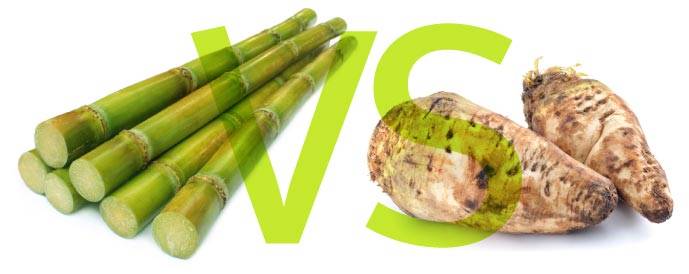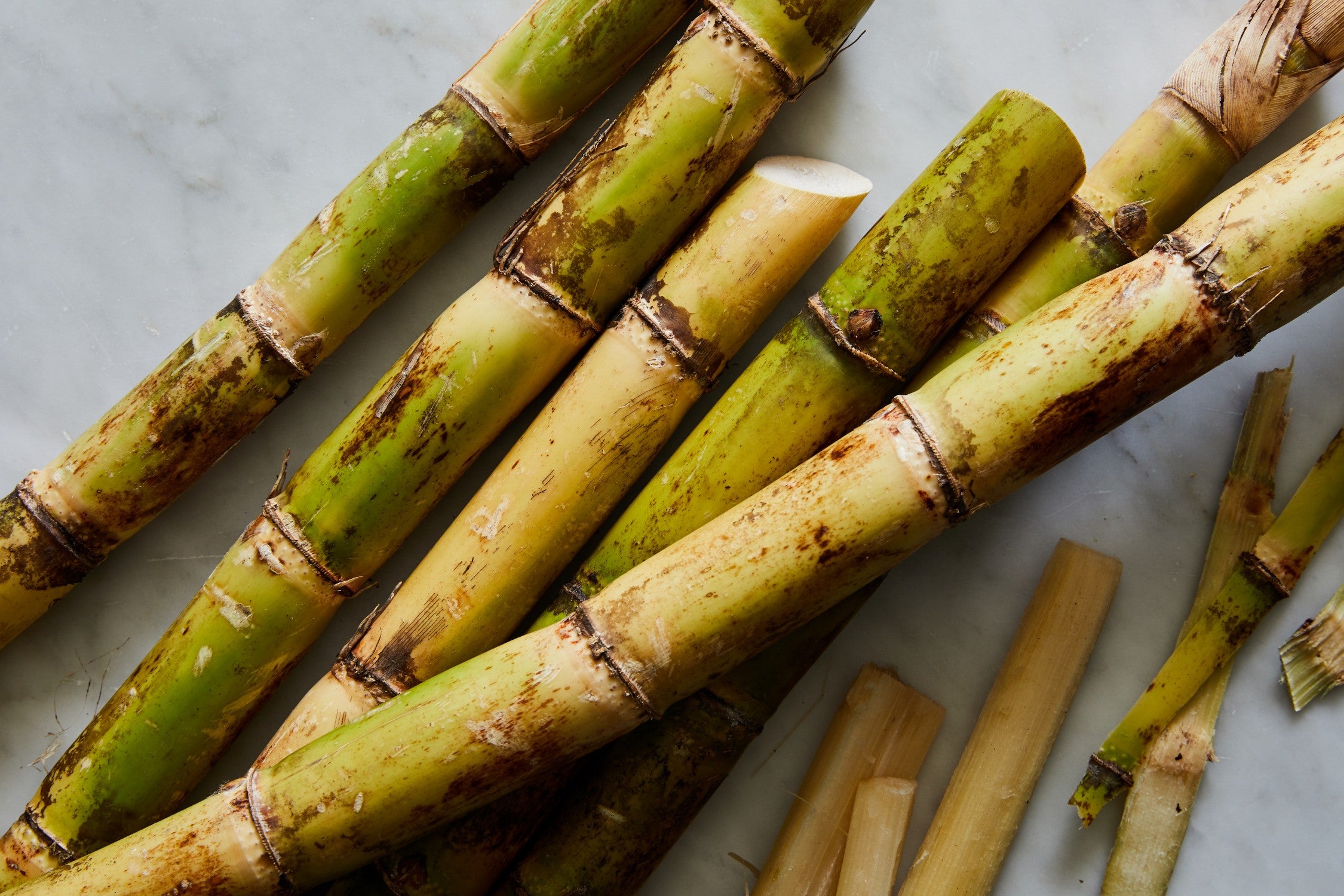The Trip of Cane Sugar Processing: From Harvest to Crystals
The Trip of Cane Sugar Processing: From Harvest to Crystals
Blog Article
Checking Out the Comprehensive Tips Involved in Cane Sugar Handling From Harvesting to Improvement
The procedure of walking cane sugar production encompasses a collection of complex steps, starting with the mindful harvesting of sugarcane and culminating in the improvement stages that make sure the final product meets sector standards. Each stage, from the removal of juice to the purification and formation procedures, plays an important function in determining the quality and personality of the sugar.
Gathering Sugarcane
Collecting sugarcane is an important step in the walking cane sugar handling chain, as it directly affects the quality and yield of the last product. Appropriate timing and techniques are essential throughout this phase to make sure optimum sugar material and reduce losses. Generally, sugarcane is collected when it gets to maturity, normally 12 to 18 months after planting, defined by a high sucrose concentration.

Post-harvest, the sugarcane should be refined promptly to stop sucrose deterioration. Ideally, collected walking stick must be carried to processing centers within 24 hours to maintain sugar top quality. Consequently, efficient logistical planning is important to preserve the honesty of the collected plant throughout the supply chain.
Removal Process
:max_bytes(150000):strip_icc()/ms-sugar-getty-cfed0662acca49f7b6e52c593767dfb9.jpg)
The crushed cane undergoes a collection of pressing operations to take full advantage of juice recovery. Normally, warm water is sprayed onto the smashed walking stick, producing a countercurrent flow that assists dissolve the sugar while additionally helping in the extraction procedure. The juice gathered from this procedure contains not only sugar however likewise numerous natural substances and impurities.

To enhance extraction efficiency, some centers may employ diffusion methods, where the sugarcane is taken in warm water, enabling the soluble sugars to diffuse right into the liquid. The resulting juice, abundant in sucrose, is after that routed to succeeding handling stages, laying the structure for purification and refinement. The extraction process is hence pivotal in figuring out the top quality and return of the final sugar product.
Purification Techniques
The filtration methods used in cane sugar processing are important for transforming the raw juice into a top notch sugar product. These techniques largely intend to get rid of impurities, such as soil, plant products, and inorganic compounds, which can detrimentally impact the final product's flavor and color.
This process includes adding lime and heat to the raw juice, which facilitates the coagulation of contaminations. Additionally, the usage of phosphoric acid can improve the information procedure by more binding pollutants.
An additional substantial technique is carbonatation, where carbon dioxide is introduced to the made clear juice. This response generates calcium carbonate, which records staying contaminations and promotes their elimination.
Furthermore, activated carbon therapy might be used to adsorb any staying colorants and organic pollutants, ensuring an extra polished product. The combination of these techniques properly prepares the sugar juice for succeeding actions in her explanation the refining procedure, setting the phase for the manufacturing of high-quality walking stick sugar.
Formation Methods
After the find more information purification phase, the following important step in walking cane sugar processing involves condensation techniques, which play a pivotal duty in transforming the cleared up juice into strong sugar. This procedure normally utilizes 2 main techniques: spontaneous condensation and controlled crystallization.
In spontaneous formation, supersaturated sugar remedies are allowed to cool naturally, bring about the development of sugar crystals over time. This approach is easier yet might cause unequal crystal dimensions and lower purity degrees. On the various other hand, regulated crystallization is a more specific technique where concentration, seeding, and temperature level representatives are carefully managed. This technique enables the consistent growth of sugar crystals and higher purity.
Throughout crystallization, the cleared up juice is concentrated through evaporation, raising its sugar content up until it gets to supersaturation. When this point is attained, either technique can promote the formation procedure. Cane Sugar Processing. The resultant sugar crystals are after that divided from the staying syrup via centrifugation
Eventually, the option of formation approach affects the high quality, size, and purity of the final sugar product, making this action crucial in the total walking stick sugar handling procedure.
Refinement and Product Packaging
Exactly how can the purity and high quality of walking stick sugar be additionally boosted after condensation? The improvement process plays an essential role in attaining premium walking stick sugar.
Next, the sugar is subjected to a process called centrifugation, where it is spun at broadband to divide the purified sugar crystals from the continuing to be fluid. After centrifugation, the sugar is typically further improved with an approach called carbonization or phosphatation, which utilizes triggered carbon or phosphoric acid to get rid of color and off-flavors.
When refined, the sugar is dried to accomplish the wanted moisture material, making certain that it continues to be steady during storage and transport. The final step includes product packaging the polished sugar in moisture-proof and closed containers to keep its quality and protect against contamination. Cane Sugar Processing. Correct packaging not only visit prolongs life span however likewise promotes very easy handling and circulation, ensuring that consumers get sugar that satisfies the greatest criteria of pureness and top quality
Conclusion
The extensive steps involved in walking stick sugar handling, from the thorough harvesting of sugarcane to the elaborate improvement and packaging stages, underscore the value of each phase in making sure high-quality sugar production. Optimum harvesting strategies, effective removal approaches, and extensive purification procedures collectively add to the end product's purity and stability. The formation and subsequent packaging methods further enhance the integrity and life span of the sugar, highlighting the complexity and accuracy inherent in this necessary farming sector.
The process of cane sugar manufacturing includes a collection of intricate actions, starting with the cautious harvesting of sugarcane and culminating in the refinement phases that ensure the final item meets industry criteria. Ideally, gathered walking stick ought to be delivered to refining facilities within 24 hours to protect sugar high quality.In spontaneous condensation, supersaturated sugar remedies are permitted to cool down naturally, leading to the development of sugar crystals over time - Cane Sugar Processing. The refinement procedure plays a vital duty in achieving high-grade walking cane sugar.The thorough actions involved in walking cane sugar handling, from the meticulous harvesting of sugarcane to the intricate improvement and product packaging stages, emphasize the significance of each stage in guaranteeing top quality sugar production
Report this page